Violin Mode Damper
A simple damper for the test mass violin modes
Reasearch Assistant - Advisor: Dr. Richard Mittleman - Aug. 2018 - Present
The aim of this project is to develop a simple system with low overall impact that is able to damp the violin modes of the ETM and ITM suspensions. These modes have been calculated and their frequencies range is from 499 to 517 Hz.
The VMD
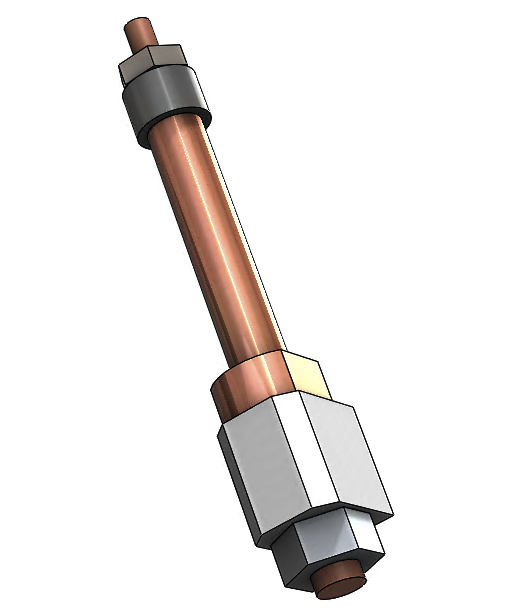
The advanced LIGO mirrors are suspended from fused silica fibers to guarantee the level of vibration isolation required for detection. However, when the resonances of these low-loss fibers are excited, the ring-down lasts several days, compromising the operation of the interferometer.
To reduce the ring-down time, I created a simple passive damper to extract energy from these modes, called the violin mode damper (VMD). The solution consists of a spring-mass system, where the spring is provided by a copper rod and where the frequency can be tuned using washers.
As a research assistant, I designed, manufactured, and tested, with Dr. Mittleman, the first prototype, which demonstrated the adequacy of the design in terms of frequency tuning. This work was presented at the critical and final design reviews and the VMDs will be installed in the advanced LIGO observatories before the next scientific run.
Design
Functional Requirements
The goal of the VMD is to damp the violin modes of silica fibers that suspend the LIGO test masses. Each LIGO observatory has four test masses and each mass is suspended with four silica fibers. For the two observatories, these add up to a total of 32 violin modes. The fundamental resonance of all the fibers have been measured and they range from 499 to 517 Hz. Therefore, the resonance of the VMD must be tunnable within that range. The required resolution for that tunnability is determined by the quality factor of the VMDs. We stablished that a tunnability within 1Hz was required.
The total mass of each VMD must be below 50g. The reason is that an excess weight will make it to difficult to balance the suspended test mass to its nominal configuration.
Finally, two sets of VMDs should be designed, with same weight and overall dimensions, to damp the fundamental and second violin harmonic modes, at approximately 500Hz and 1kHz, respectively.
VMD Design
The solution consists of a spring-mass system, where the spring is provided by a copper rod and where the frequency can be tuned by adding or removing washers, affecting the mass and/or length of the system. It can be analytically derived that the frequency of the system follows:
where are the diameter and length of the copper rod and the tungsten mass, respectively (more detail in the Publications and related documents section).
Using this first order equation in combination with finite element analysis (FEA) I designed the two different VMD in agreement with the aforementionned requirements. This analysis showed that using whasers of different sizes and materials the frequency of the system could be tunned with sub-Hertz resolution.
One of the challenges of this project was to find the correct material and treatment for the desired quality factor of the VMD, which is largely defined by the rod. Dr. Richard Mittlement has worked on the testing of different materials and the impact of quality factor in the overall damping and has found annealed copper to be the best solution.
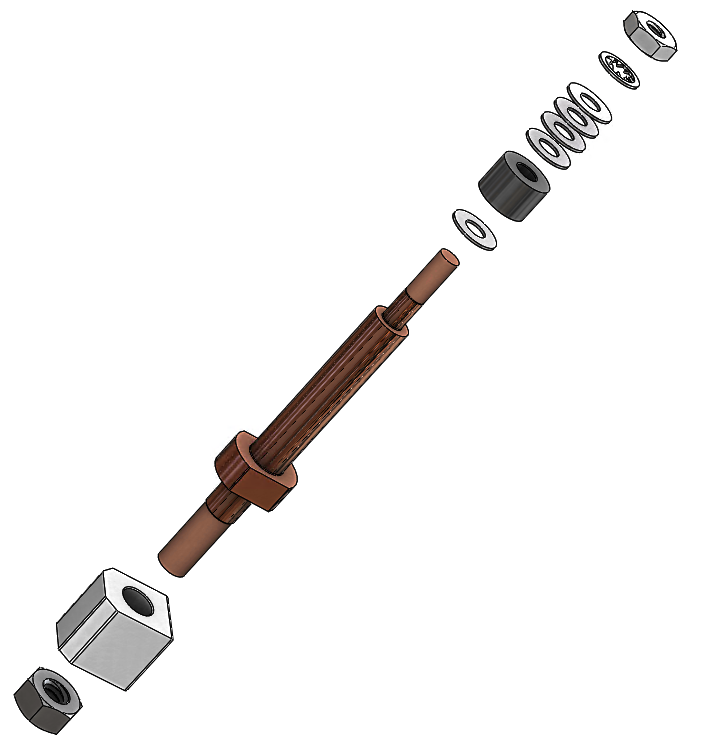
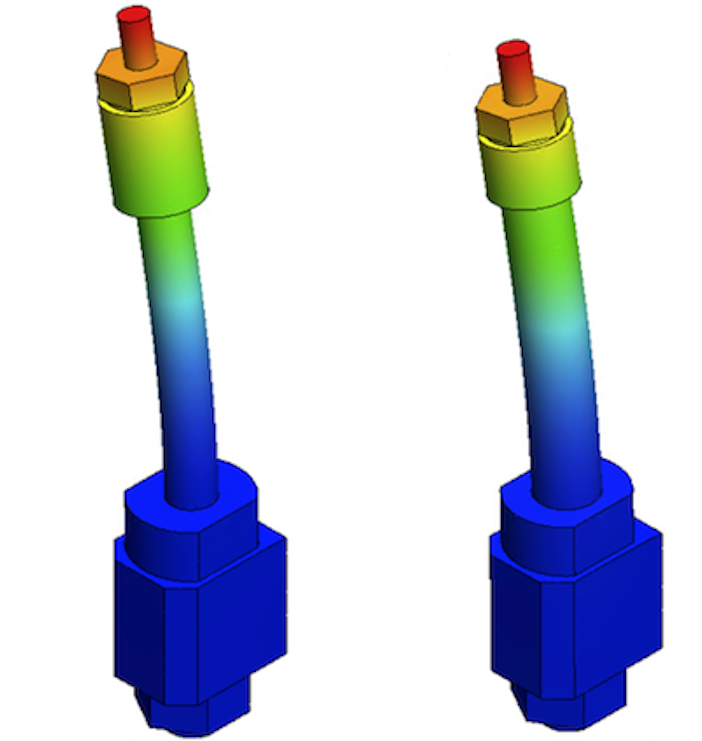
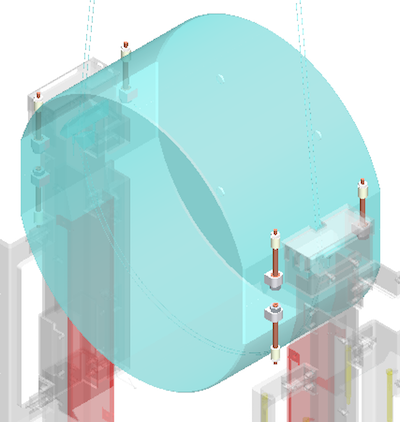
Testing
Initial testing
The initial testing, which I conducted at the MIT laboratory, had as objective determining if the predicted tunnability range could be achieved with the washers. For that, along with Dr. Mittleman, I set up a simple shadow sensor measurment to extract the frequency and quality factor of the system under different conditions.
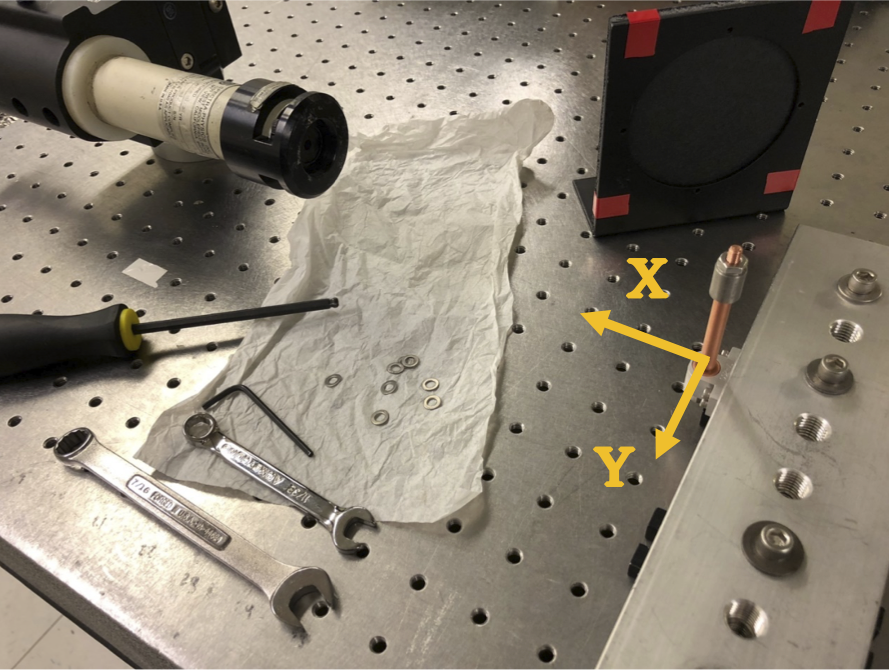
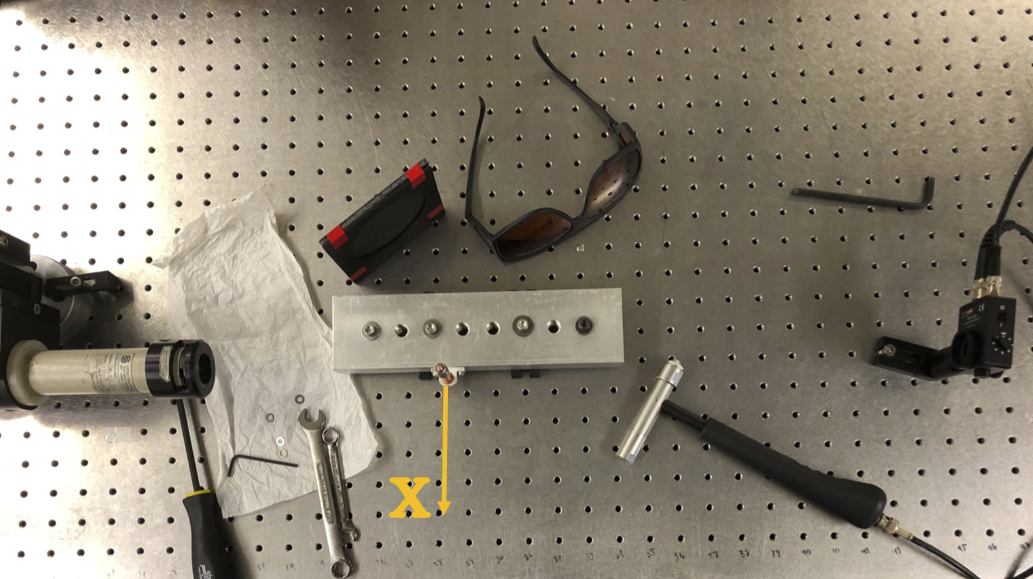
This test showed the adequacy of the designed solution in terms of nominal resonance value and tunnability range. However, the quality factor could not be properly determined due to coupling with the experimental boundary conditions. Moreover, the experimental data showed a separation between the two-axis modes of the VMD that was larger than predicted by the FEA. The result was a redesign of the base to bring the resonances in the two axis closer together.
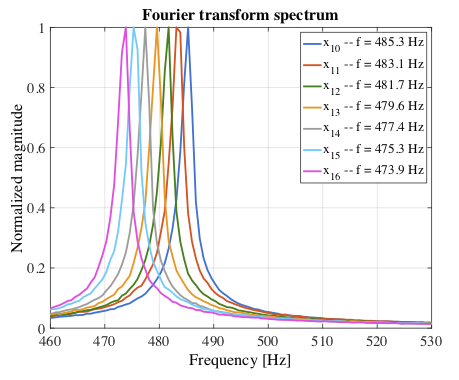
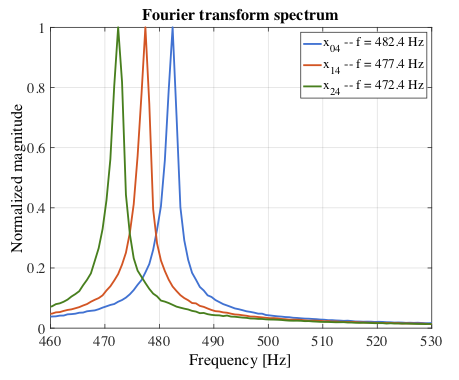

Further testing
After the initial testing, a significant fraction of the testing effort was spent into the definition of the best material and treatment, given the desired qualitiy factor, and effort done by Dr. Mittleman. Similarly, different bases were tested to guarantee small modal separation and to guarantee good adhesion to the penultimate mass.
Finally, the installation tooling is a critical part of the development of this project, since it will enable reliable and consistent installation of the VMDs. Since the VMDs are glued into the silica using epoxy, the curing time and applied pressure must be controlled. The installation being done inside the vacuum chamber renders this process complex and special tooling had to be designed and tested by Dr. Biscans.
The Team
Dr. Richard Mittleman has lead the prototyping phase of the project that led to the Final Design Review and he has been responsible for the prototype testing at the MIT facilities. After the Critical Design Review, a team formed by Dr. Sebastian Biscans and Eddie Sanchez to develop all the associated tooling.